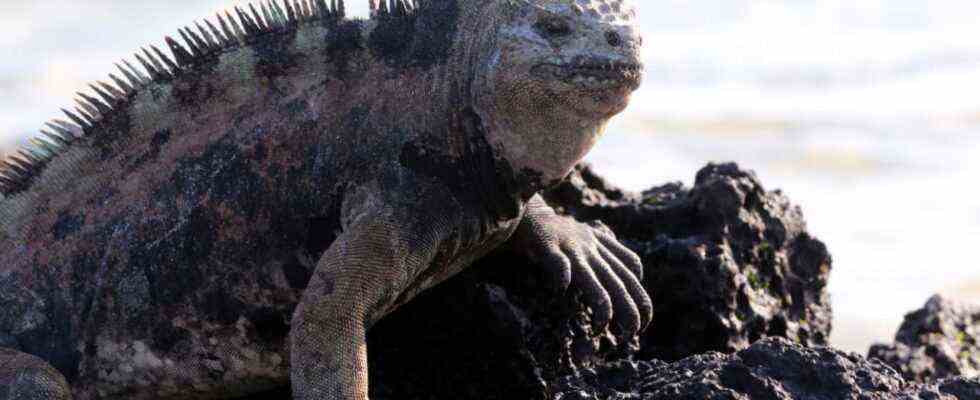Status: 01/15/2022 1:19 p.m
Ecuador has expanded the marine reserve around the Galápagos Islands by 60,000 square kilometers – it is now the second largest in the world. This is intended to protect the migration routes of endangered animal species.
The marine reserve around the Galápagos Islands in the Pacific is growing by 60,000 square kilometers. Ecuador’s President Guillermo Lasso signed the corresponding decree on board a research ship in the Bay of Puerto Ayora in the presence of ex-US President Bill Clinton and Colombia’s head of state Iván Duque.
Marine Protected Area around Galapagos Islands is being expanded
Tagesschau 12:53 p.m., 15.1.2022
The new area called “Hermandad” will connect the Galápagos Islands with the islands of Coiba (Panama), Malpelo (Colombia) and Coco (Costa Rica) and protect the migration routes of endangered species such as turtles, whales and sharks. The heads of state of the countries involved announced the new marine protection area last year at the world climate conference in Glasgow.
A giant tortoise native to the Galápagos Islands. The archipelago hosts the largest number of endemic species in the world.
Image: REUTERS
“A Vital Necessity”
“There are places that have marked the history of mankind and today we are honored to be in one of those places,” Lasso said. “These islands teach us something about ourselves: what if we acted not as lords of this earth, but as its protectors?” The oceans are “important regulators of the global climate”. Protecting them is “not naïve idealism, but a vital necessity”.
Around 138,000 square kilometers of sea area around the Galápagos archipelago have been under protection since 1998. The islands belong to Ecuador and are located around 1000 kilometers west of the South American coast in the Pacific. The sanctuary, where industrial fishing is banned, is now the second largest marine sanctuary in the world at 198,000 square kilometers. The area is to be supplemented by other protected areas in neighboring Colombia and Panama in order to create an international biosphere reserve.
UNESCO World Heritage Site since 1978
The Galápagos Islands have been a UNESCO World Heritage Site since 1978 because of their unique biodiversity. The archipelago is home to the world’s largest number of endemic species – species that only occur there – such as marine iguanas, land iguanas and Galápagos finches. It became famous thanks to the British naturalist Charles Darwin, who also based his theory of evolution on his observations there.

